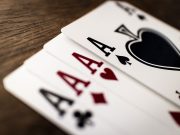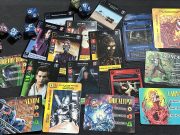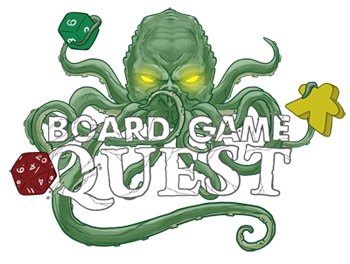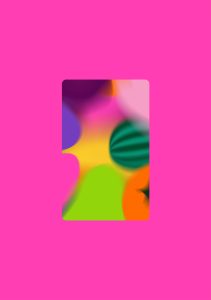 Publisher CMYK has recently released a series of boxed card games called their “Magenta” line. For those of you who aren’t print nerds like me, CMYK stands for Cyan-Magenta-Yellow-Black, the four colors used in printing. Does this mean that they might eventually release a Cyan line or a Yellow line? Who knows?
Publisher CMYK has recently released a series of boxed card games called their “Magenta” line. For those of you who aren’t print nerds like me, CMYK stands for Cyan-Magenta-Yellow-Black, the four colors used in printing. Does this mean that they might eventually release a Cyan line or a Yellow line? Who knows?
But for now, what you need to know is that their goal with the Magenta line is: “In a world of increasing digital distractions, Magenta is set to revive a classic way we gather and play – making face-to-face connections through card game nights with family, friends, and new faces around the table.”
To be honest, I’m not 100% sure what that actually means, but regardless, let’s take a look at the 4th game in the Magenta line, Fruit Fight. Published by the good Dr. Reiner Knizia, Fruit Fight is a push-your-luck card game that takes about 15 minutes to play.
Gameplay Overview:
To set up the game, you shuffle the deck. And that’s it. The deck is made of 90 cards, in sets numbered from 1-10. There are 11 cards in each set numbered 1-5, and 7 each of cards numbered 6-10. Each numbered card also has a picture of a piece of fruit on it (banana, cherry, orange, etc…).
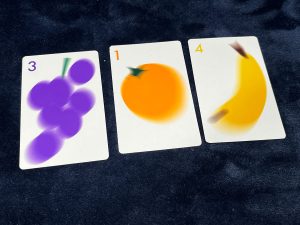
On a player’s turn, they draw the top card of the deck and add it to their play area. They then decide if they want to draw again or stop. There is no risk in drawing a card until a player has 3 cards in front of them. Once they do, if they draw a duplicate card, they bust are discard all of their drawn cards.
I’m sure this will sound familiar to many of you. However, there are two wrinkles to the classic push your luck mechanic. The first is that when you draw a card, you have the option to take all the matching cards on the table in front of other players. So if you draw a banana, you can take all the bananas showing from Player A, Player B, and Player C.
The second wrinkle is that you don’t score cards until the start of your next turn. So if you end your turn with 2 oranges and 3 watermelons, you have to wait until the start of your next turn to add them to your score pile, which means someone can steal them if they draw a matching fruit.
The game ends when the deck runs out, and the player with the most points wins.
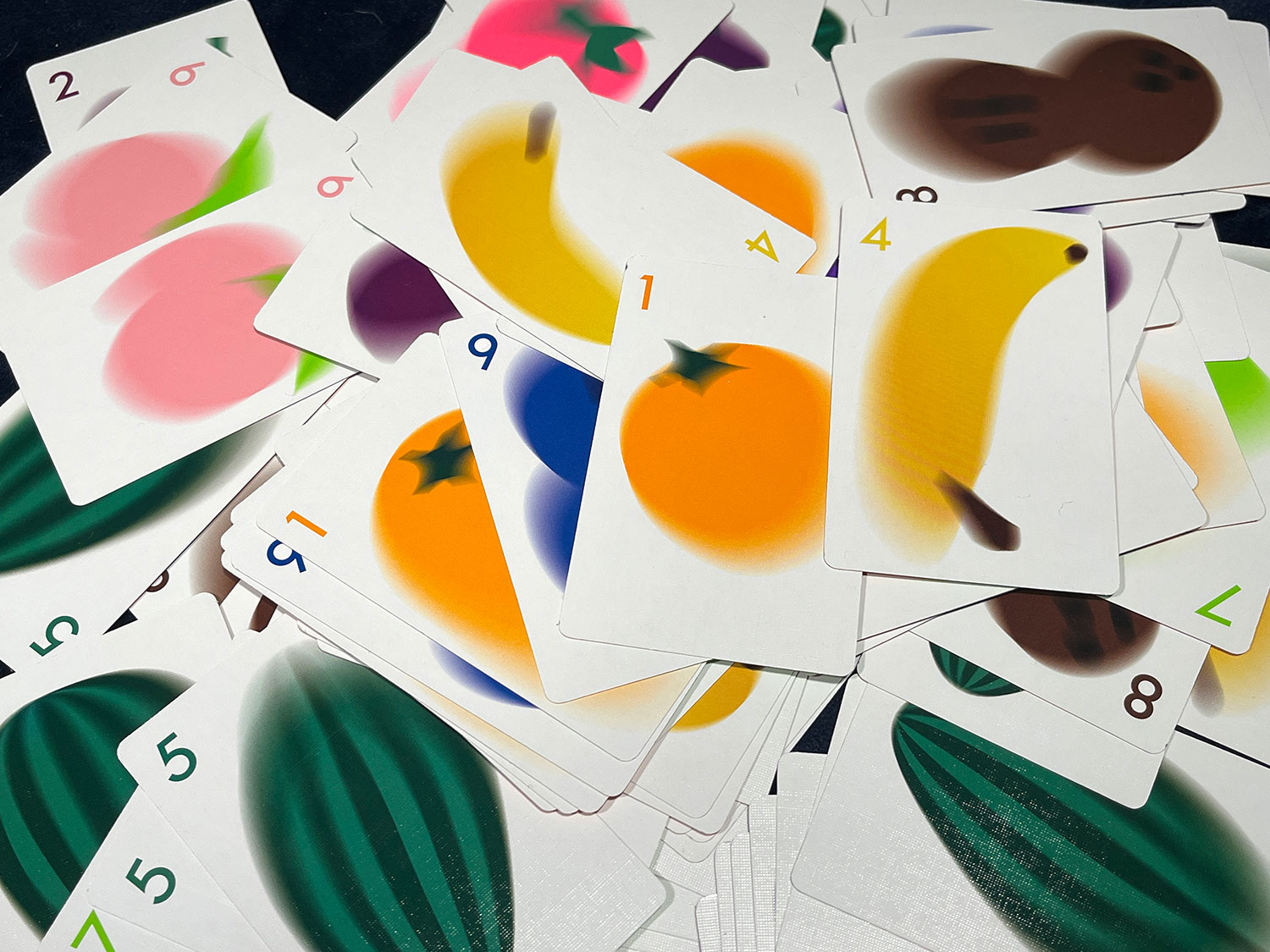
Game Experience:
I’m no stranger to push-your-luck card games, with Flip 7 and Pairs being staples in my collection. And I think Fruit Fight fits in nicely with them. It’s really those two aforementioned wrinkles that keep the game interesting. Without them, I think the game would be fine, but forgettable. However, adding in those two mechanics takes the gameplay up a notch as it’s not only more interactive, but also more tense.
It also has the added benefit of adding more decisions to the game. When you start your turn, you can just draw 3 cards right away, as you can only bust after you have a 3rd card in your play area. Yet, say you draw a grape card and the person to your right has 2 of them sitting in front of them, waiting to be scored. The easy decision is to grab those cards and continue on your merry way. Right?
Yet, those grapes are only worth a paltry 3 points each. And since you now have 3 cards in front of you, you risk busting on the very next card. So then, do you decline them, hoping for better draws from the deck before you enter busting territory? Doing that will not only deprive you of points in hand, but also allow your opponent to score those points. I like it when seemingly light games have interesting moments of decision-making like this.
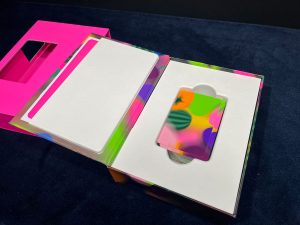
Fruit Fight is actually not a new game. It’s been released in various forms over the years under different names and publishers. Cheeky Monkey and Hit! come to mind. However, for this version, CMYK has given it a fruit fight theme with some minimalist art and a bright magenta box. Overall, the components are nice with two exceptions. One is that they used magenta font on white paper in the rulebook. While that’s on theme, it’s really hard for my old eyes to read. Please don’t do that again.
The other issue is more of a minor annoyance in that there is a lot of wasted space in the box (think the classic offender Splendor). It’s just a deck of cards, but you could easily fit 4 decks in this box. My guess is that they wanted all 4 Magenta line games to have the same box size, so it looks nice on your shelf. I can’t really argue with that logic, and if I had all four games, I’d probably want them to look nice next to each other as well. But only having one, it’s case a lot of dead space, which I may just rehome into a small deck box for easy travel.
Final Thoughts:
While I’ve only played 1 of the 4 Magenta line of games, Fruit Fight is excellent. It’s accessible enough to be played with just about anyone, and it works great as a casual filler game on game night. The game features a lot of tense moments and cheering or groaning when someone busts. If you are a fan of quick-playing, push-your-luck card games, Fruit Fight is an excellent addition to the genre.
Final Score: 4 Stars – A great push-your-luck card game that can be played with just about anyone.
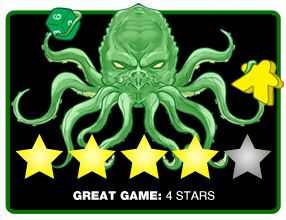 Hits:
Hits:
• Easy to get to the table and start playing
• Some nice wrinkles to the standard push your luck formula
• Overall nice production values
• Some tense moments
Misses:
• Magenta font on white paper is hard to read
• Lots of wasted space in the box





